News
EPJ Plus Highlight – Statistical uncertainty in line shift and width interpretation
- Details
- Published on 21 October 2012
EPJ Data Science Highlight - Twitter data crunching: the new crystal ball
- Details
- Published on 21 October 2012

Scientists have devised a means to predict the outcome of election-based processes such as TV talent shows through the big data analysis of tweets.
Fabio Ciulla from Northeastern University, Boston, USA, and his colleagues demonstrated that the elimination of contestants in TV talent shows based on public voting, such as American Idol, can be anticipated. They unveiled the predictive power of microblogging Twitter signals—used as a proxy for the general preference of an audience—in a study recently published in EPJ Data Science.
EPJ D Highlight - Plasma screens enhanced as disorder strikes
- Details
- Published on 21 October 2012

Study looks at ways to improve the quality of matter akin to that found in plasma screens by dissolving its self-organised hexagonal filament structures made of electric discharge.
A new study improves our understanding of plasma sources, a state of matter similar to gas in which a certain portion of the particles are ionised and which are used for example in plasma display panels. These results revealed by physicists from the University of Greifswald, Germany, Robert Wild and Lars Stollenwerk, and are about to be published in EPJD.
EPJ B News – Topical issue on GW Calculations for Complex Systems
- Details
- Published on 21 October 2012
The GW method is emerging as a conceptual and computational platform for developing increasingly more accurate descriptions of electronic excitations. Guest editors Feliciano Giustino, Paolo Umari and Angel Rubio hope that the new EPJB topical issue on the Challenges and Solutions in GW Calculations for Complex Systems will provide an exciting perspective on the state-of-the-art in this fascinating research area, and encourage new developments in view of addressing the widest range of materials. The papers in this topical issue will be free to access through the end of November 2012.
EPJ D Highlight - Hi-fi single photons
- Details
- Published on 21 October 2012
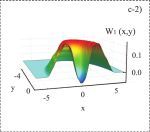
A trade-off between photon source settings and detector specific requirements allows the generation of high-fidelity single photons.
Many quantum technologies—such as cryptography, quantum computing and quantum networks—hinge on the use of single photons. While she was at the Kastler Brossel Laboratory (affiliated with the Pierre and Marie Curie University, École Normale Supérieure and CNRS) in Paris, France, Virginia d’Auria and her colleagues identified the extent to which photon detector characteristics shape the preparation of a photon source designed to reliably generate single photons. In a paper just publishedEPJ B - Noise down, neuron signals up
- Details
- Published on 20 August 2012
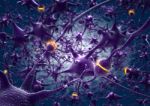
A new model of background noise present in the nervous system could help better understand neuronal signalling delay in response to a stimulus.
Biomedical engineer Muhammet Uzuntarla from Bulent Ecevit University, Turkey, and his colleagues present a biologically accurate model of the underlying noise which is present in the nervous system. The article has just been published in EPJB. This work has implications for explaining how noise, modulated by unreliable synaptic transmission, induces a delay in the response of neurons to external stimuli as part of the neurons coding mechanism.
EPJ B - Banks’ cash stash: no shield against bankruptcy
- Details
- Published on 20 August 2012
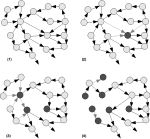
Imposing minimal capital levels for banks is like attempting to solve a complex jigsaw puzzle with a poorly fitting piece that could lead to even greater chaos.
According to theoretical physicists João da Cruz and Pedro Lind from Lisbon University, Portugal, imposing minimum capital levels for banks may not prevent the insolvency of a minority of banks from triggering a widespread banking system collapse. In a study just published in EPJB, the researchers explain why this measure could instead lead to larger crises.
EPJ E - Too cool to follow the law
- Details
- Published on 10 August 2012
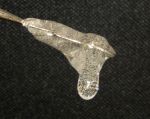
Study suggests viscous materials do not follow standard laws below a sub-melting point threshold.
So-called glass-formers are a class of highly viscous liquid materials that have the consistency of honey and turn into brittle glass once cooled to sufficiently low temperatures. Zhen Chen and his colleagues from Arizona State University, USA, have elucidated the behaviour of these materials as they are on the verge of turning into glass in an article just published in EPJE.
EPJ B - Telling the tale of the wealth tail
- Details
- Published on 10 August 2012

Models designed to represent taxation and wealth redistribution could be adjusted to reflect a target level of wealth distribution.
A mathematical physicist and her colleague, both from the Free University of Bozen-Bolzano, Italy, are just published a study in EPJB on a family of taxation and wealth redistribution models. The findings could lead to numerical simulations of potential wealth distribution scenarios playing out over the long term and could be used for policy decision making.
EPJ B - Turbulences at a standstill
- Details
- Published on 10 August 2012
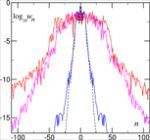
Energy flowing from large-scale to small-scale places may be prevented from flowing freely in specific conditions.
For theoretical physicist Dima Shepelyansky from the CNRS-University of Toulouse, France, devising models of chaos and turbulence is his bread and butter. In a recent study published in EPJB, he presents an exception he found in a model of turbulence, indicating that there are energy flows from large to small scale in confined space. Indeed, under a specific energy threshold, there are no energy flows, similar to the way electron currents and energy spreading are stopped in disordered solids.




